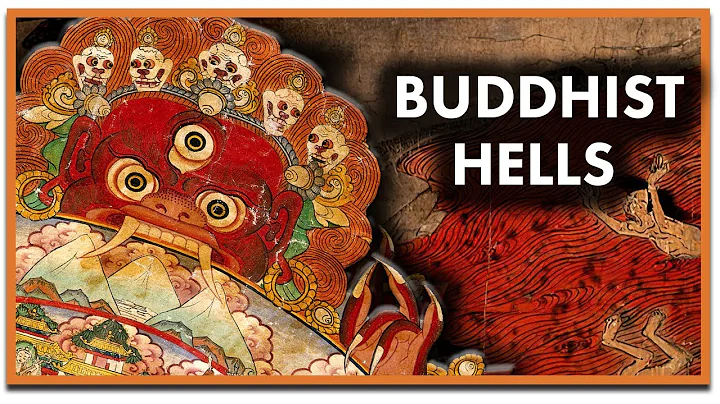The universal rain method of rain moistens everything, and it is difficult to do suffering and behave in sentient beings.
—Great Compassion Mantra
High steps is the fourth place of the eight major places in the West Mountain in Beijing—Great Compassion Temple .

88888888888888888888888888888888888888888888888888888888888888888888888888888888888888888888888888888888888888888888888888888888888888888888888888888888888888888888888888888888888888888888888888888888888888888888888888888888888888888888888888

Disciples
"Great Compassion Mantra" is the great compassion, supreme bodhicitta of Guanyin Bodhisattva , and an important formula for saving the world and saving people, practicing Taoism and becoming a Buddha. The more than 80 Bodhisattvas on the wall are the more than 80 transformations formed by Guanyin Bodhisattva to save suffering and hardship.

Great Compassion Mantra
The fourth Great Compassion Temple, originally named Yinji Temple, was built in (1033) in the Liao and Jin Dynasties. In the 29th year of Jiajing in the Ming Dynasty (1550), the Great Compassion Pavilion was added after the original three-story hall. It was rebuilt in the 51st year of the reign of Emperor Kangxi of the Qing Dynasty (1712) and renamed Dabei Temple. It was rebuilt again in the 60th year of Qianlong (1795).

Dabei Temple
Hill gate hall is bell tower and Drum tower .

Bell Tower
Two ancient elm trees at the door are like a pair of loyal guards, guarding the Great Bear Temple for many years.

三三平台
shan Gate Hall is a building with a polio tile roof on the hard mountain. The eaves are decorated with painted green paintings, and the front of the ridge is three dragons and three phoenixes on the back. The carvings are exquisite and lifelike. The white marble temple is embedded under the linden hall, and the five words "Imperially built Dafei Temple" are engraved on it, which is written by Emperor Kangxi. Under the forehead is the white marble coupon door, with three statues of gods carved in the middle of the lintel, and a human face and bird beak in the middle. It is the adaptive image of the golden-winged bird of in the Buddhist scriptures, as well as the reliefs of white elephants, lions, dragons, and sheep. On both sides of the coupon door are stone carved windows, with Kuilong images arranged on both sides, mixed with honeysuckle grass patterns, which are graceful and solemn.

shanmen hall
in the middle of the mountain gate hall is the sitting statue of "Big Belly Maitreya Buddha", with the four heavenly kings standing on the left and right.

Maitreya Buddha
There are two steles next to the back steps of the hall, one is the stele of "Reconstructing the Great Bear Temple" and the other is the stele of "Reconstructing the Great Bear Temple in Cuiwei Mountain".

Stone Monument
climbed up to the Main Hall.

Master Hall
The main hall is a hard mountain ridge building. The center front of the ridge is "two dragons playing with pearls" and the back is a brick carving pattern of "three phoenixes". Its chubby and ridge beast are also unparalleled. There are three wonders in Dabei Temple: exquisite dragon and phoenix brick carvings carved on the ridge of each hall, Eighteen Arhats on both sides of the Great Hall, and two ginkgo trees in front of Guanyin Hall were planted in the Yuan Dynasty.

Mahara Hall
Mahara Hall worships the Buddhas of the Three Ages.

3 Buddha
Eighteen Arhats, arranged in two hatches, sat upright on the marble, listened carefully to the Buddha's preaching, and conveyed the mentality of each understanding between the body and spirit. Some are kind, some are sad, some are sad, some are angry; some are thoughtful, some are used to strode the instrument, and their postures are different, lifelike, and they are a masterpiece. They are the treasures of the eight major places to maintain the mountains. According to the word of mouth of the temple monks, this set of works with both form and spirit and excellent skills were created by Liu Yuan , a famous sculptor of the Yuan Dynasty. Liu Yuan was superb in sculpture art. In the middle of the Yuan Dynasty, all Buddha statues from Shangdu (now Zhenglan Banner, Inner Mongolia) and Dadu (now Beijing) were his works. The statues they are made of realistic charm and praise from the world.

Eighteen Arhats
It is said that the fetus of these Eighteen Arhats is made of sandalwood powder mixed with fine sand. Hundreds of years have passed, and whenever you enter the hall, you can still feel sandalwood surround the beam, refreshing.

Eighteen Arhats
Haven Hall east side hall is the living hall, and the west side hall is Di Ksitigarbha Hall .

Ksitigarbha Hall
The next hall is Guanyin Hall.

Guanyin Hall
There are two towering ancient ginkgo trees in front of the hall, which are thick and several circumferences, with lush branches and leaves. They are said to have been planted in the Yuan Dynasty.Many trees of all sizes grow around the trunk, forming the shape of stars holding the moon, so they are called "Gongsun Tree".

Ancient Ginkgo
It is a good time for autumn, the sun shines through and the sky is full of gold, which is so beautiful.

Ancient Ginkgo
Guanyin Bodhisattva is worshipped in Guanyin Hall.

Guanyin Hall
East side hall worships Manjushri Bodhisattva .

Manjushri Hall
West side hall worships Samantabhadra Bodhisattva .

Samuhan Hall
Hit up the steps from both sides and came to the last hall.
This place was originally called Dabei Pavilion. It was built in the 29th year of Jiajing in the Ming Dynasty and was built by the donation of the Queen of Jing. King Jing was the younger brother of Emperor Xiaozong of Ming ( Hongzhi ) and the uncle of Emperor Shizong of Ming ( Jiajing ). Emperor Shizong respected King Jing very much. King Jing died in the 16th year of Jiajing. Emperor Shizong built a tomb for him in Xishan, Beijing and built the Jingwang Mansion for Princess Jing in Beijing, so that he could live his life. Every year, the Empress of Jingwang comes to Xishan to sweep the tomb of King Jingwang, and at the same time, the Queen of Jingwang brings incense. At that time, there was an open space behind the temple. The Queen of Jing donated money to build the Great Compassion Pavilion and worshipped Guanyin Bodhisattva .

Medicine Buddha Hall
The Guanyin statue in the Great Compassion Pavilion at that time has long disappeared. It was restored and rebuilt into the Medicine Buddha Hall in 2004, and worshipped the "Medicine Buddha".

Medicine Master Hall
Standing in front of the Medicine Master Hall, at the height of the temple, you can clearly see the dragon and phoenix brick carvings on the front ridge of the Guanyin Hall. I don’t know if it is because the Great Bear Temple worships Guanyin Bodhisattva, and the brick carvings on the ridge of the temple are mainly phoenixes as the main ones, dragons as the auxiliary ones. Perhaps it was because of the donation of the Queen of Jing.

brick carving
The west side of the Medicine Buddha Hall is the "Zashi Hall". The east side of the hall is the pagoda courtyard. There are towering pine and cypress around, and a monk floats by.

Temple monk
Dabei Temple was famous temples in both Ming and Qing dynasties, and was particularly prosperous during the Kangxi and Qianlong periods. In the 51st year of the reign of Emperor Kangxi, Emperor Kangxi heard that the abbot of Zen Master Huideng (named Gumei) at the time, "was able to be honest and self-reliant and respectful," so he summoned him at Tianfuzhai, Changchun Garden, and gave him a generous amount of money to praise him, "distribute the treasury of the inner palace" and rebuilt the "Edict to build the Dafeng Temple".

Heart Sutra Wall

guanyin statue
In the thirteenth year of Qianlong's reign, Emperor Qianlong summoned Zen Master Huideng and presented him with the imperial poem "The Imperial Poem to Ancient Plum". Poetry Day:
Traveling to the mountains is a warm autumn, and I occasionally pass by the temple because of the fragrance.
The sound of the clouds is still intermittent, and the moon has no shadow from Cui Wei.
The most happy clean room is abbess, and he is just called the Zen monk Gumei.
Let Cuiyan speak loudly and her eyebrows win white.







![[English] Who Am I - Lecture 1 - Ven. Guan Cheng - DayDayNews](https://i.ytimg.com/vi/KU0fUs2It5o/hq720.jpg?sqp=-oaymwEcCNAFEJQDSFXyq4qpAw4IARUAAIhCGAFwAcABBg==&rs=AOn4CLDFpQUN_QwRfC7bmP4sUadq-RcYdg)
![A Moving Masterpiece 清明上河图 [English narration] - DayDayNews](https://i.ytimg.com/vi/kxff-4GktOI/hqdefault.jpg?sqp=-oaymwEcCOADEI4CSFXyq4qpAw4IARUAAIhCGAFwAcABBg==&rs=AOn4CLBtHGLeUpJNCYDJYnZTuISQ1N5Vag)


